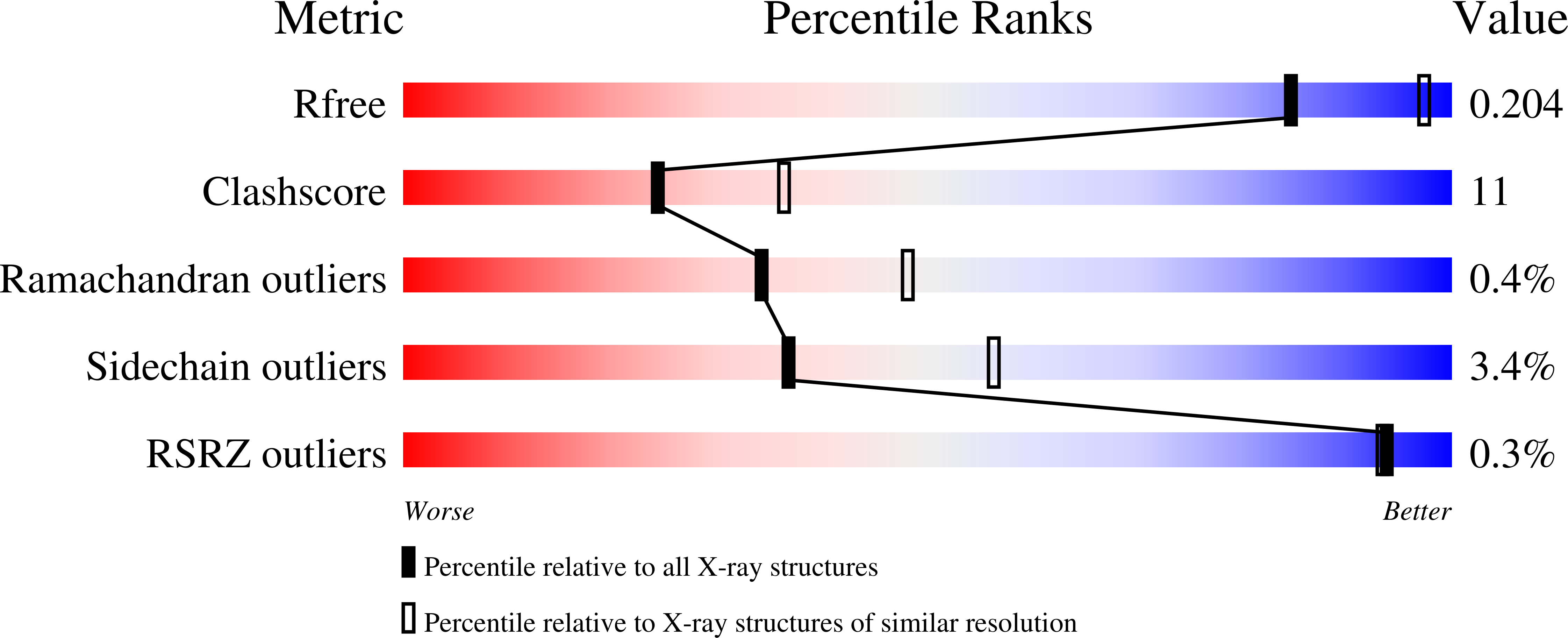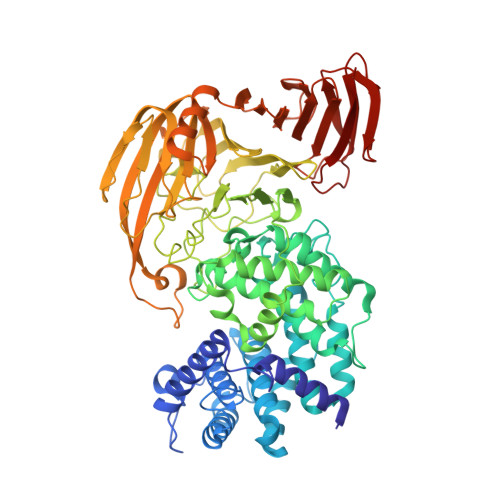A Structural Factor Responsible for Substrate Recognition by Bacillus sp. GL1 Xanthan Lyase that Acts Specifically on Pyruvated Side Chains of Xanthan
Maruyama, Y., Mikami, B., Hashimoto, W., Murata, K.(2007) Biochemistry 46: 781-791
- PubMed: 17223699
- DOI: https://doi.org/10.1021/bi0619775
- Primary Citation of Related Structures:
2E22, 2E24 - PubMed Abstract:
Xanthan is a bacterial heteropolysaccharide composed of pentasaccharide repeating units, i.e., a cellobiose as a backbone and a trisaccharide consisting of two mannoses and one glucuronic acid as a side chain. Nonreducing terminal mannose residues of xanthan side chains are partially pyruvated. Bacillus sp. GL1 xanthan lyase, a member of polysaccharide lyase family 8, acts specifically on pyruvated side chains of xanthan and yields pyruvated mannose through a beta-elimination reaction by using a single Tyr255 residue as base and acid catalysts. Here we show structural factors for substrate recognition by xanthan lyase through X-ray crystallographic and mutational analyses. The enzyme accommodates mannose and pyruvated mannose at the -1 subsite, although both inhibitor and dissociation constants of the two monosaccharides indicated that the affinity of pyruvated mannose for xanthan lyase is much higher than that of mannose. The high affinity of pyruvated mannose is probably due to the formation of additional hydrogen bonds between the carboxyl group of pyruvated mannose and amino acid residues of Tyr315 and Arg612. Site-directed mutagenesis of the two residues demonstrated that Arg612 is a key residue in recognizing pyruvated mannose. Arg612 is located in the protruding loop covering the substrate, suggesting that the loop functions as a lid that is responsible for the proper accommodation of the substrate at the active site.
Organizational Affiliation:
Laboratory of Basic and Applied Molecular Biotechnology, Division of Food Science and Biotechnology, Graduate School of Agriculture, Kyoto University, Uji, Kyoto 611-0011, Japan.















